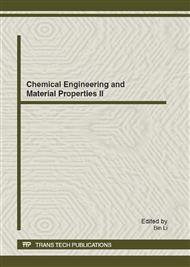p.353
p.358
p.362
p.366
p.370
p.374
p.378
p.382
p.387
Studies on Electrooxidation Reaction of 4-Chlorophenol on Carbon Electrode by In Situ FTIR
Abstract:
Electrooxidation of 4-chlorophenol in acidic solution was studied by cyclic voltammetry and in situ FTIR spectroscopy. Compared with platinum (Pt) and glassy carbon (GC) electrodes, carbon electrode exhibited a high electrocatalytic activity during the electrooxidation reaction of 4-chlorophenol. The possible mechanism of 4-chlorophenol on carbon electrode was studies by in situ FTIR. At first, 4-chlorophenol was electrooxidized to 4-chlorophenolic radical, and then to phenoxylic radical. Then, the radical was electrooxidized to hydroquinone, benzoquinone or unsaturated carboxylic acids with potential increasing. In addition, with the reaction of phenoxyl radicals, the insoluble aromatic ether oligomer generated on the carbon electrode surface and prevented the further oxidation reaction of 4-CP in some degree.
Info:
Periodical:
Pages:
370-373
Citation:
Online since:
July 2012
Authors:
Keywords:
Price:
Сopyright:
© 2012 Trans Tech Publications Ltd. All Rights Reserved
Share:
Citation:


